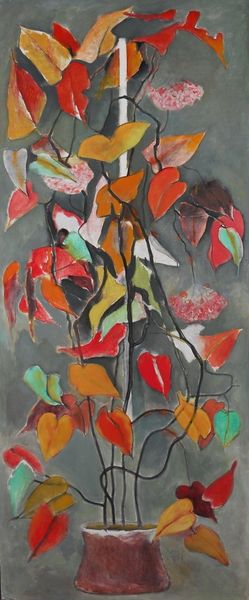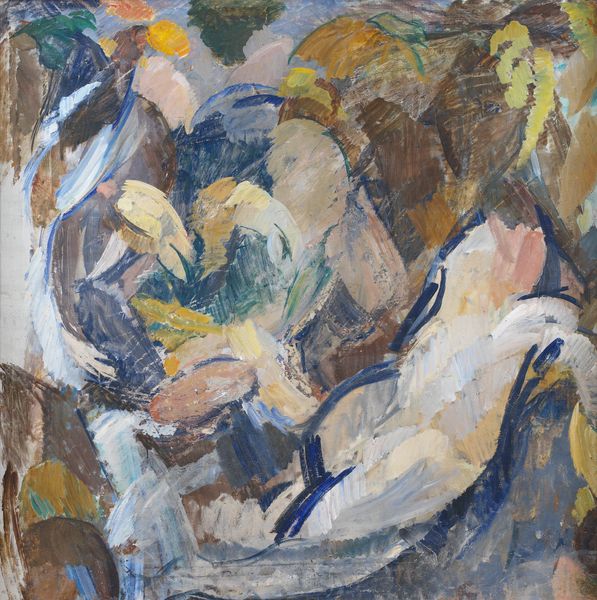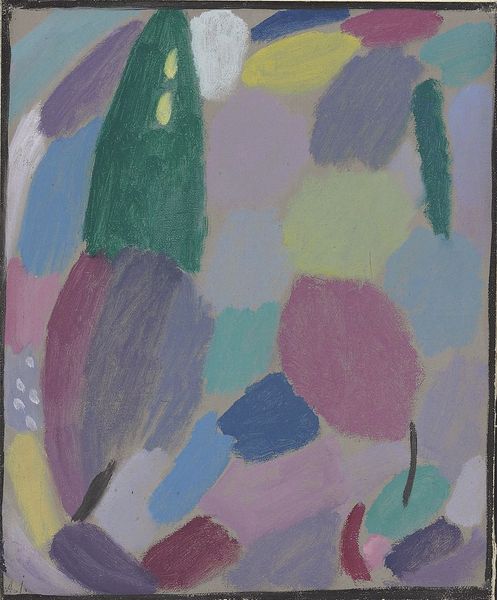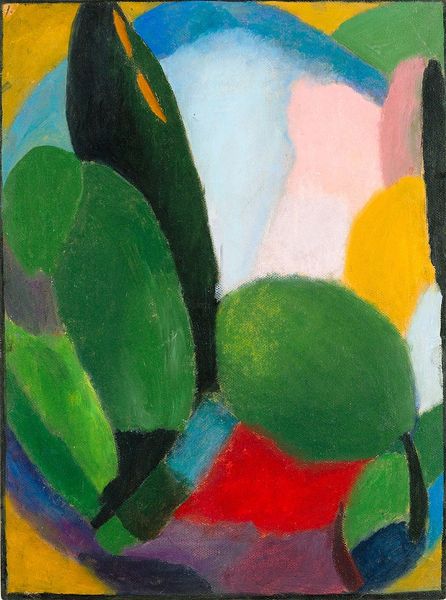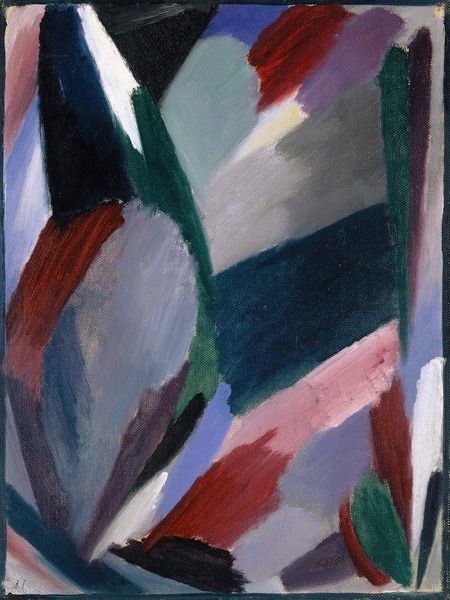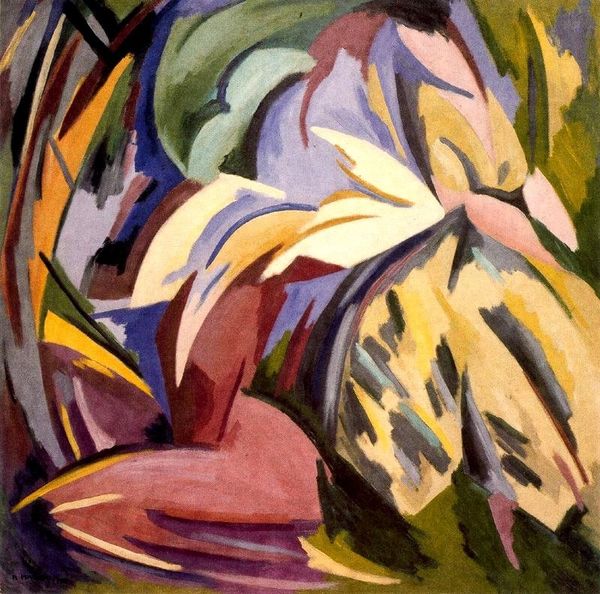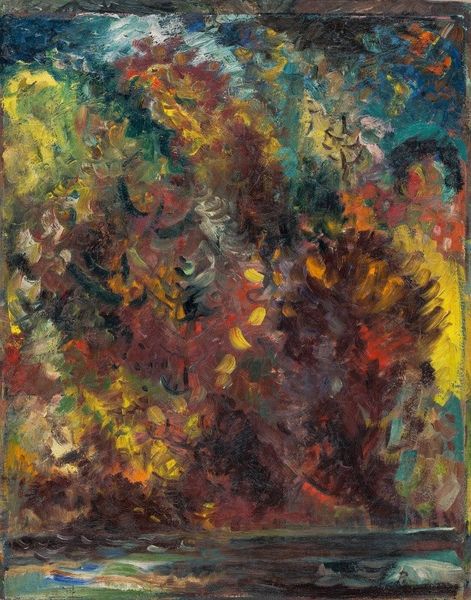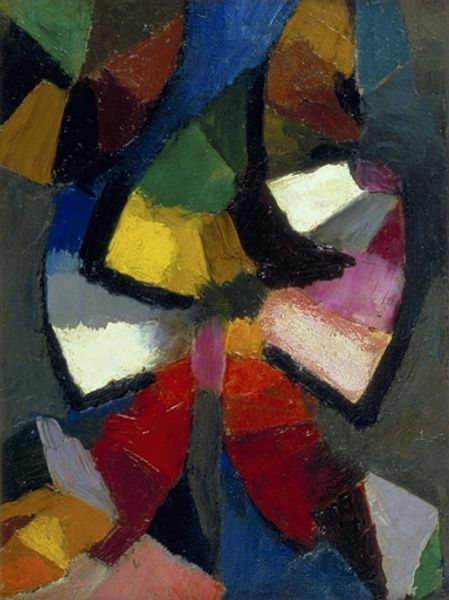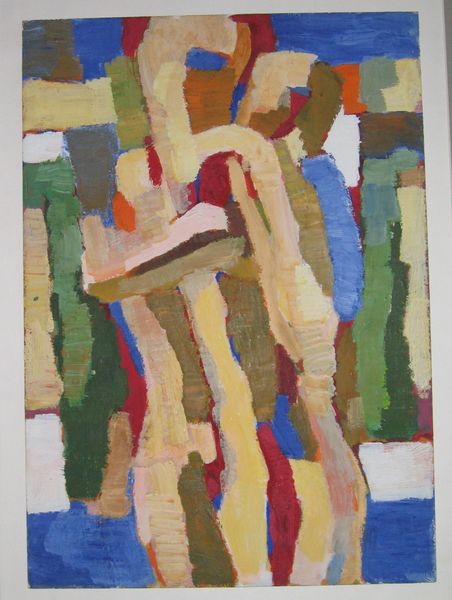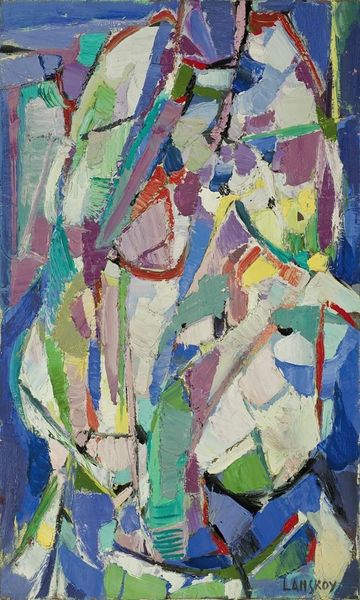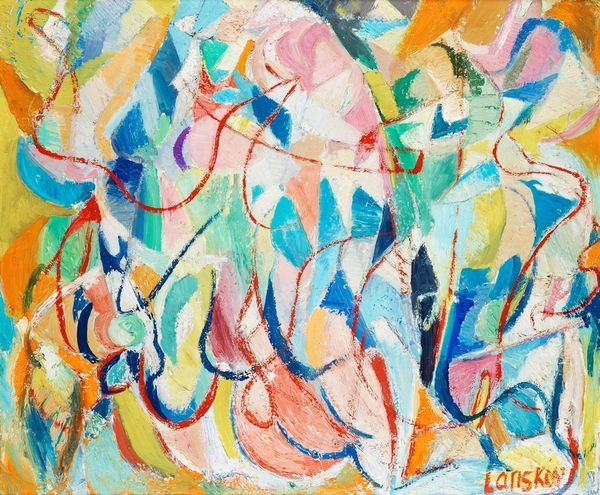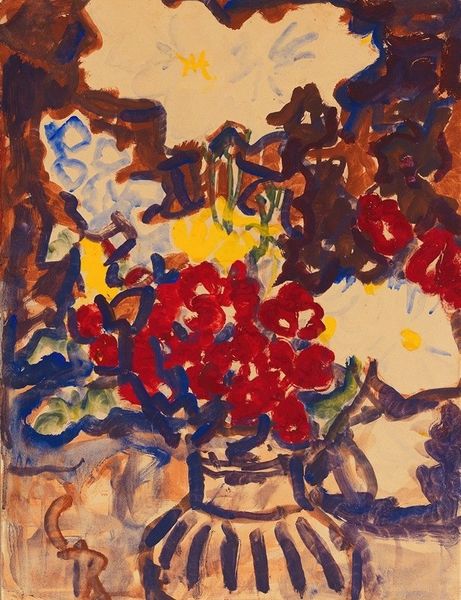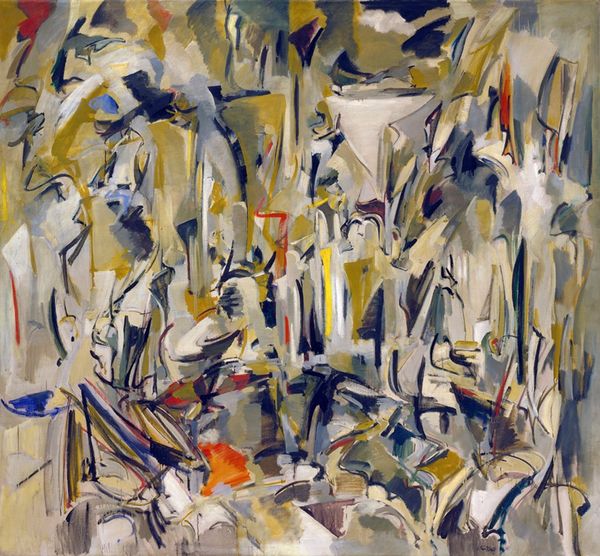
Copyright: Public domain US
Curator: Standing before us is Hans Richter's 1917 painting, "Autumn." It is an oil on canvas, representative of his early abstract expressionist style. Editor: Immediately, the flurry of color and chaotic composition creates a strong impression of instability, almost as though one is caught in the swirl of a storm. The warm browns and yellows suggest the season, but the overall effect is unnerving. Curator: It's important to remember that Richter's practice extended beyond pure painting. He actively questioned the societal function and the making of art. The lack of figuration challenges traditional landscape painting, dismantling its reliance on illusionism. Look closely at the paint application – thick brushstrokes applied in layers. The materiality speaks volumes about the artist’s process and the labour involved. Editor: Agreed, the energetic application certainly conveys process. But, beyond just formal properties, consider the context of 1917. Richter was living through World War I. This abstract depiction of "Autumn" may represent not merely a season, but a cultural, political, and even personal decline. He belonged to a Dada circle that wanted to radically depart from former values, to show how disturbed the state of society was. Curator: I appreciate your reading of it, grounding the abstraction in a concrete political and social reality. For me, though, the beauty is that through his application of oil paint, Richter embraces chance. In a traditional landscape there would be an easy path for the viewers’ eye, and a recognizable representation of nature. Richter disrupts those conventions in favour of abstraction. This disruption opens the possibilities for understanding materials and processes in different contexts, such as design. Editor: That’s where we differ, because for me the beauty of this, and the usefulness, lies exactly in that challenge: by disrupting tradition he encourages a reconsideration of it, forcing us to reflect on whose autumn is represented, and what structures are at play that grant access only to certain figures. I find Richter to be showing us both what's visible and what remains invisible. Curator: A valuable perspective, I concur. Editor: Absolutely; that duality is at the core of it all, isn’t it?
Comments
No comments
Be the first to comment and join the conversation on the ultimate creative platform.
